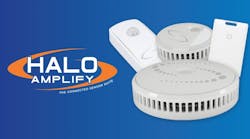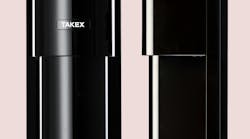On Nov. 1, 2004, a New York City local law went into effect requiring the installation of carbon monoxide (CO) detectors in all residential units. The law applies to one- and two-family homes, apartment houses (three-family homes and above), hotels, motels, lodging houses, rooming houses, dormitories, rectories, convents and group homes. As winter approaches and people begin heating their homes, the risk for CO exposure greatly increases. Detectors are important -- and in some states and municipalities, now legally required -- safeguards against the danger of carbon monoxide poisoning. Several ANSI members and accredited standards developers offer standards that govern the use and testing of these life-saving instruments.
Carbon monoxide is an odorless, tasteless, colorless gas that is created when fuels (such as gasoline, wood, coal, natural gas, propane, oil, and methane) burn incompletely. It is produced by many common devices, including cars, gas appliances, and wood stoves. The poisonous gas can cause suffocation even at very low concentrations with its ability to retard the body's release of oxygen in the bloodstream. Concentrations as low as 20 or 30 parts per million (PPM) can be harmful if one is exposed for several hours. The symptoms associated with CO poisoning include headache, fatigue and nausea. Exposure at 2,000 PPM for one hour will cause unconsciousness.
Carbon monoxide detectors trigger an alarm based on the accumulation of CO over time. The New York City law requires the installation of a detector within 15 feet of the primary entrance to any room used for sleeping purposes in residential buildings that use fossil fuels -- coal, kerosene, oil, wood, gas and other petroleum products -- in a furnace, boiler, water heater or fireplace. The National Fire Protection Association (NFPA), an ANSI member and accredited standards developer, is currently updating the 2003 version of NFPA 720, Recommended Practice for the Installation of Household Carbon Monoxide (CO) Warning Equipment, which provides recommended practices for the selection, location, performance, and maintenance of equipment that detects hazardous concentrations of CO in family living units.
According to Underwriters Laboratories (UL) 2034, Standard for Safety for Single and Multiple Station Carbon Monoxide Detectors, home CO detectors must sound a warning before CO levels reach 100 parts per million over 90 minutes, 200 parts per million over 35 minutes or 400 parts per million over 15 minutes. The standard requires the alarm must sound before an average, healthy adult begins to experience symptoms of CO poisoning. The warning provides time to evacuate the premises. UL 2034 covers electrically operated single and multiple station CO alarms intended for protection in ordinary indoor locations of dwelling units, including recreational vehicles, mobile homes, and recreational boats with enclosed accommodation spaces and cockpit areas.
ANSI member and accredited standards developer ASTM International has developed American National Standard ASTM D6332-99, Standard Guide for Testing Systems for Measuring Dynamic Responses of Carbon Monoxide Detectors to Gases and Vapors. The systems are used to evaluate responses of detectors to various CO concentrations, to verify that the detectors alarm at certain specified concentrations and do not alarm at certain other specified concentrations. ASTM also produced ASTM E2292-04, Standard Practice for Investigating Carbon Monoxide Poisoning Incidents, which covers guidelines for collecting and preserving information and physical evidence related to incidents involving the poisoning of individuals by CO.
For Your Customers
UL provides consumers with product safety tips on carbon monoxide detectors at http://www.ul.com/consumers/monoxide.html. For more information on how to reduce the risks from CO and other combustion gases and particles, call the Environmental Protection Agency's IAQ INFO Clearinghouse (1-800-438-4318) or the Consumer Product Safety Commission (1-800-638-2772).

